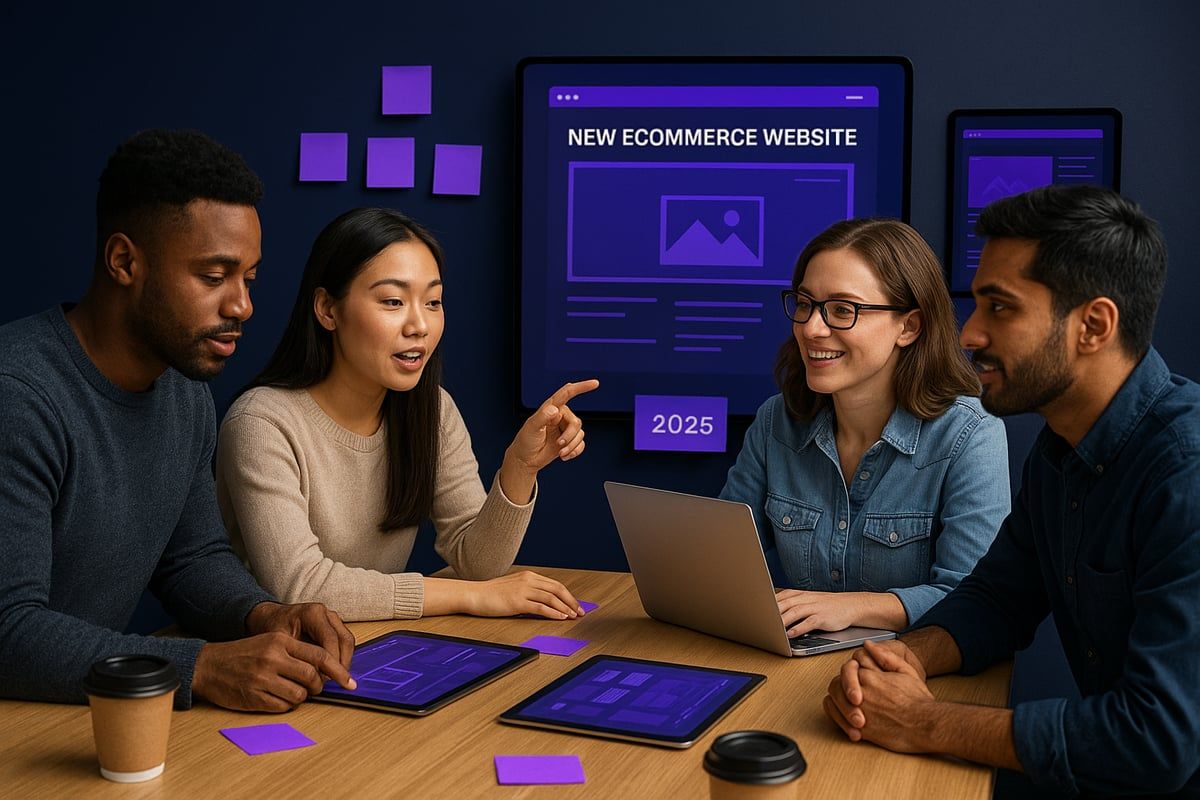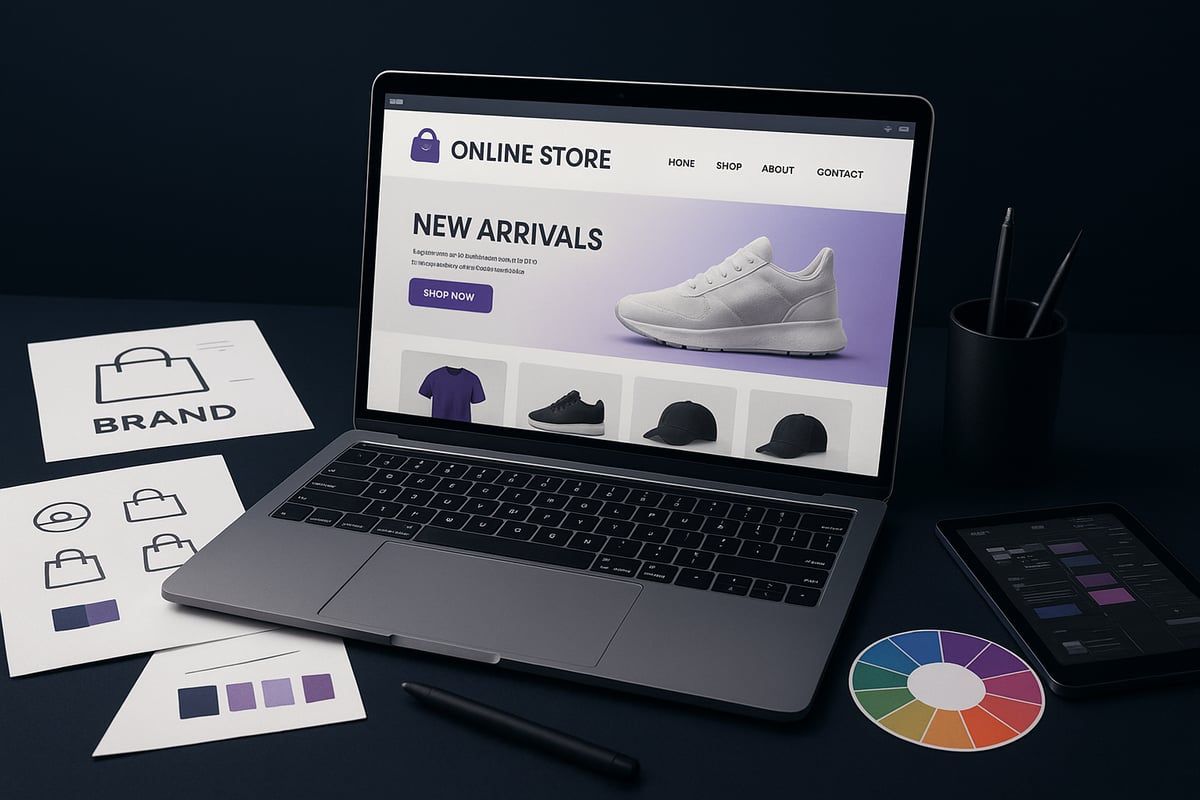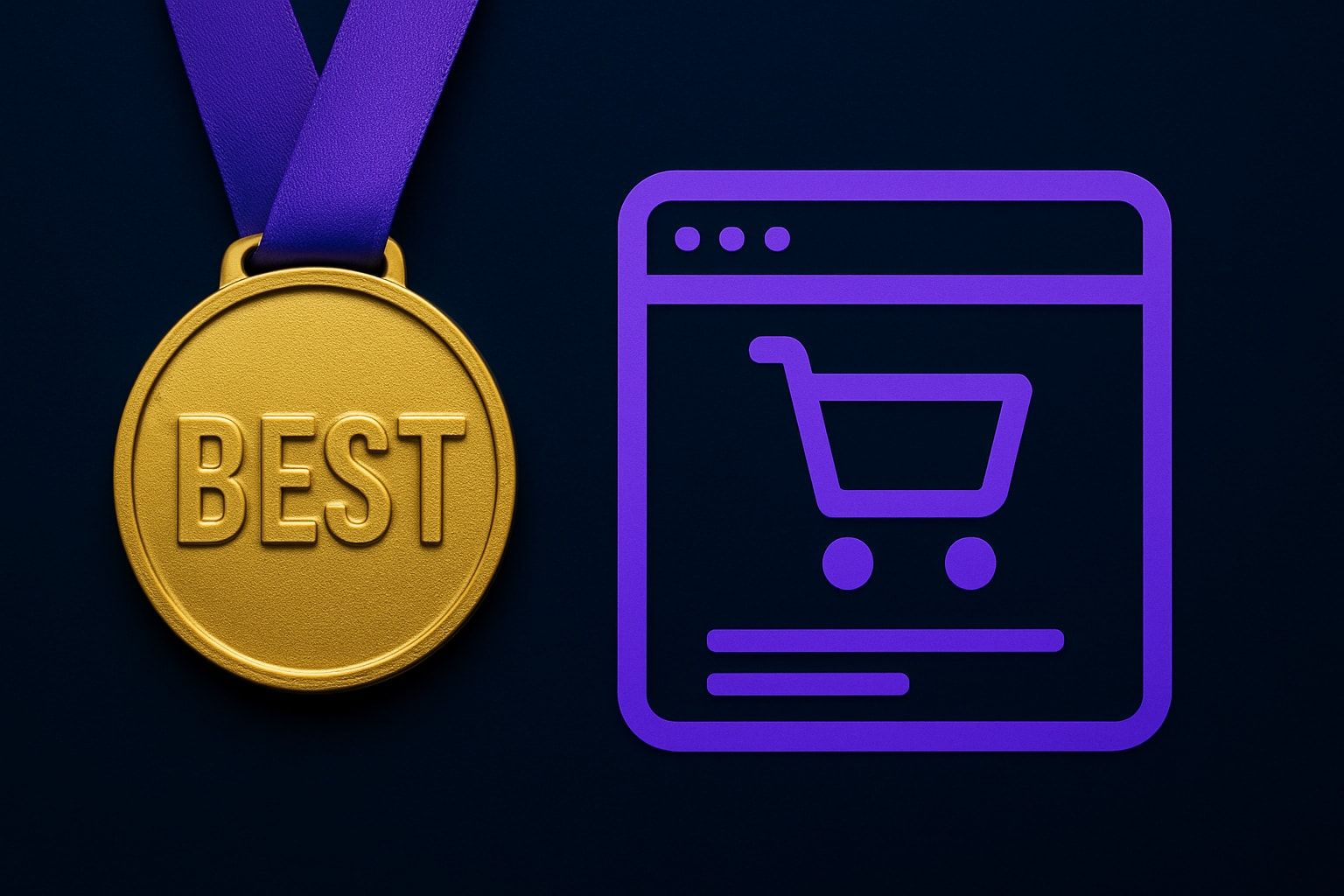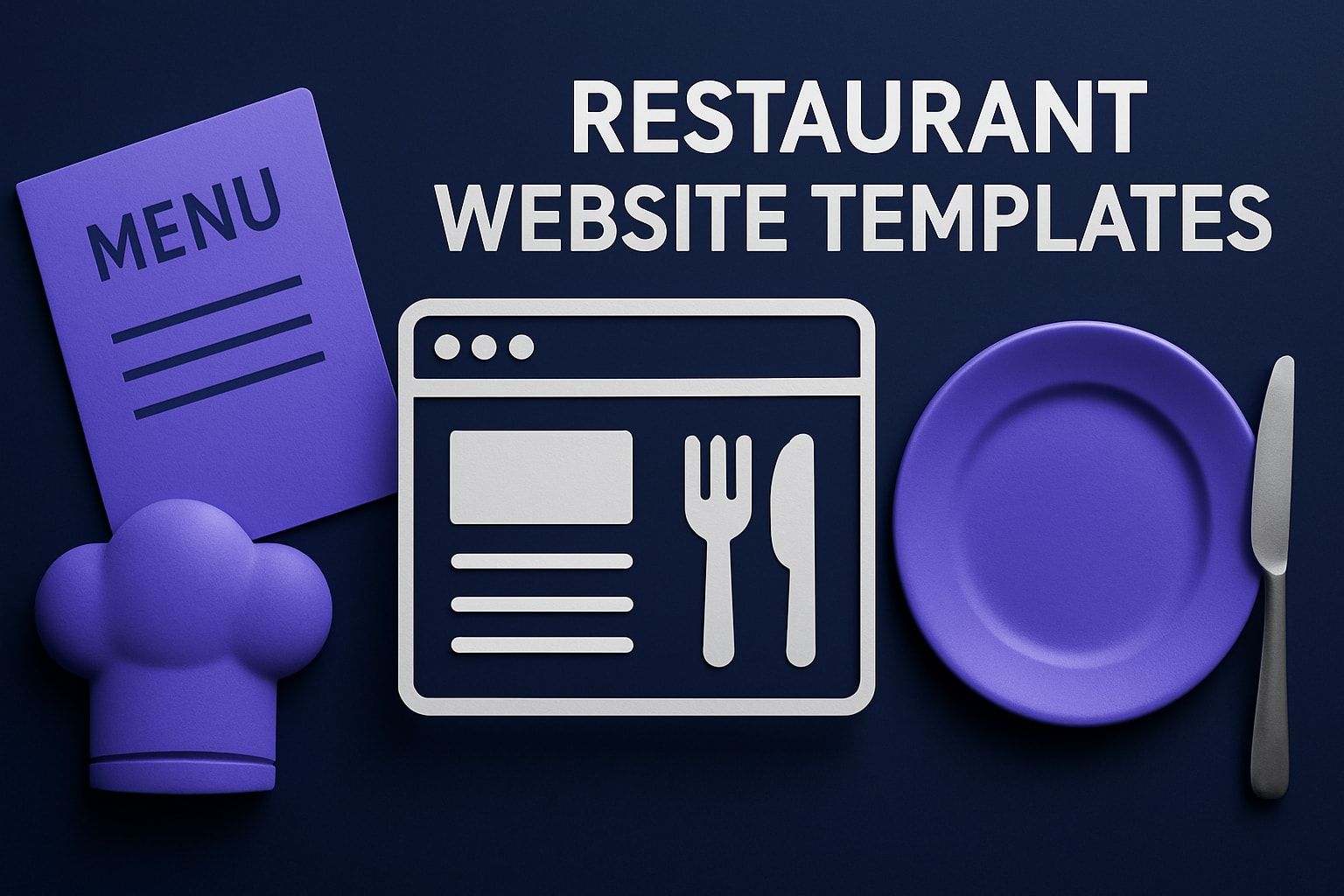Build Your Own Ecommerce Website: The 2025 Success Guide
Imagine launching your own ecommerce store in 2025. The process is faster, smarter, and more profitable than ever before.
In this guide, you will learn how to build your own ecommerce website with strategies and tools designed for the digital landscape of 2025.
You will discover how to plan your store, choose the best platform, design for conversions, and add must-have features. We will also cover how to optimize for SEO and drive traffic so your store stands out.
Ecommerce keeps growing every year. Now is the perfect time to take control, start your own business, and unlock the freedom you want. Ready to begin? Follow this step-by-step roadmap to turn your idea into a thriving online store.
Step 1: Planning Your Ecommerce Success
Launching a successful ecommerce business in 2025 starts with a rock-solid plan. Before you build your own ecommerce website, you need to lay the groundwork for sustainable growth and profitability. Each step you take now sets the tone for your brand’s future.

Defining Your Niche and Target Audience
Choosing the right niche is the foundation when you build your own ecommerce website. A focused niche helps you stand out among competitors and connect with specific buyers. In 2025, profitable ecommerce niches are driven by trends like eco-friendly products, home tech, and wellness.
Start by researching your market:
- Use tools like Google Trends and SEMrush
- Analyze competitors’ strategies and customer reviews
- Profile your ideal customer using demographics and interests
Look at successful brands that carved their space in a crowded market. For more guidance, check out Ecommerce website solutions to see how niche selection influences your overall store setup.
Setting Goals and Budget
To build your own ecommerce website effectively, set clear business objectives. Decide if your focus is on rapid sales, brand building, or long-term growth. Calculate all startup and ongoing costs, from domain and hosting to marketing and inventory.
Allocate your budget wisely:
- Website development
- Marketing campaigns
- Initial inventory and shipping
Set realistic launch timelines with milestones. Many new stores start lean, then invest more as profits grow. For example, a small business might allocate 40% to website setup, 30% to marketing, and 30% to inventory in the first year.
Choosing Your Product Offerings
When you build your own ecommerce website, decide whether to sell physical goods, digital products, or a mix of both. Each model has its pros and cons, so consider your resources and target audience.
Evaluate sourcing options:
- Dropshipping for low upfront costs
- Print-on-demand for custom items
- Manufacturing for full control
Track trending products using marketplace data and Google Trends. For instance, a store that jumped on the wireless earbud trend saw massive early growth. Good inventory management keeps your store running smoothly and customers happy.
Mapping the Customer Journey
Understanding your customer’s path is essential when you build your own ecommerce website. Map each stage, from awareness to purchase, to create engaging touchpoints. Think about how visitors discover your store, browse products, and complete their orders.
Key strategies include:
- Optimizing product pages for discovery
- Using email and chat for pre- and post-purchase support
- Encouraging reviews and repeat purchases
Brands that map the customer journey see higher retention and loyalty. Recent data shows customer experience can boost repeat purchases by up to 50%, proving the value of a thoughtful approach.
Step 2: Selecting the Right Ecommerce Platform
Choosing the right foundation is crucial as you build your own ecommerce website. The platform you select influences everything from customer experience to your long-term growth. Let’s break down how to make the best choice for 2025.

Comparing Top Ecommerce Platforms
When you build your own ecommerce website, the platform is your digital storefront’s backbone. Here’s a quick comparison of the top choices for 2025:
| Platform | Best For | Pros | Cons | Starting Price |
|---|---|---|---|---|
| Shopify | All business sizes | Easy setup, scalable, AI | Monthly fees, app costs | From $29/mo |
| WooCommerce | WordPress users | Flexible, open-source | More setup, hosting needed | Free (plus costs) |
| BigCommerce | Growing brands | Built-in features, scalable | Learning curve | From $29/mo |
| Wix | Beginners | Drag-and-drop, templates | Less scalable | From $27/mo |
| Squarespace | Creatives | Design, all-in-one | Fewer advanced tools | $23/mo |
Look for features like AI integrations, scalability, and marketing tools. Pricing varies, so check out this Ecommerce platform pricing guide for a detailed breakdown of costs and hidden fees before you commit. For a small store, Wix or Shopify may be ideal, while larger operations often favor BigCommerce or WooCommerce.
Essential Platform Features for 2025
To build your own ecommerce website for the future, prioritize platforms with:
- Mobile optimization and responsive design
- AI-powered automation and personalized shopping
- Built-in SEO and marketing integrations
- Scalability for peak sales periods
- PCI DSS and GDPR compliance
In 2025, shoppers expect seamless experiences on any device. Security is non-negotiable, so choose a platform that keeps your customer data safe. Investing in these features sets your store up for growth and customer trust.
Evaluating Ease of Use and Support
Ease of use matters when you build your own ecommerce website, especially if you’re new to ecommerce. Look for:
- Intuitive dashboards and editing tools
- 24/7 customer support via chat or phone
- Extensive help centers and video tutorials
- Active community forums and plugin ecosystems
Check real user feedback from 2024–2025 to see which platforms deliver on support. A responsive support team can make the difference between a smooth launch and a stressful one.
Migration and Future-Proofing Your Store
As you build your own ecommerce website, consider your long-term vision. Can you migrate your data easily if your needs change? Platforms with robust backup and export options make transitions smoother.
Stay ahead by choosing solutions that are ready for trends like AR/VR shopping and voice commerce. Brands that have migrated platforms often report greater flexibility and improved performance as technology evolves.
Step 3: Designing and Building Your Ecommerce Website
Ready to bring your vision to life? When you build your own ecommerce website, design is the foundation of every successful store. A seamless, attractive site not only grabs attention but also turns visitors into loyal customers. Let’s break down how to create a high-performing online shop that stands out in 2025.

Crafting a High-Converting Storefront
The storefront is the digital front door when you build your own ecommerce website. Focus on clear navigation, bold calls-to-action, and fast-loading, mobile-first layouts. Use visual hierarchy to highlight bestsellers and deals. Real-world examples show homepages with clean layouts and prominent product displays convert up to 30% better. Consider starting with Ecommerce website templates to speed up the design process and ensure your site looks professional from day one. Remember, every element should guide shoppers toward a purchase.
Branding and Visual Identity
Building a strong brand is essential when you build your own ecommerce website. Create a memorable logo and select a unique brand palette. Consistent typography, imagery, and messaging across your site boost trust and recognition. Even small stores can punch above their weight with professional design. For instance, a consistent visual identity can increase customer loyalty by more than 50%. Invest in branding early to set your store apart from competitors.
Product Pages That Sell
Product pages are where customers decide to buy. When you build your own ecommerce website, write clear, engaging titles and descriptions. Use high-quality photos and videos to showcase products from multiple angles. Incorporate reviews, ratings, and testimonials for social proof. Add urgency with stock counters or countdown timers. A top-performing product page combines persuasive copy with trust signals, leading to higher conversion rates and fewer abandoned carts.
Streamlining Navigation and Checkout
Smooth navigation is key when you build your own ecommerce website. Design intuitive menus and offer a robust search bar so shoppers find what they want quickly. Simplify the cart and checkout process, minimizing steps and offering guest checkout. Multiple payment options cater to different preferences. Brands that streamline checkout have seen up to a 35% reduction in abandonment rates. Every click saved is a step closer to a completed order.
Integrating Essential Ecommerce Features
To build your own ecommerce website for growth, integrate essential tools from the start. Use inventory management and order tracking to stay organized. Offer coupons, loyalty programs, and automated email notifications to boost engagement. Wishlist features encourage return visits and increased sales. For example, stores adding these integrations often see a 20% increase in repeat purchases. The right features make your business run smoother and keep customers coming back.
Ensuring Accessibility and Compliance
Accessibility is non-negotiable when you build your own ecommerce website. Follow ADA and WCAG guidelines to make your store usable for everyone. Include alt text for images, readable fonts, and easy navigation. Clearly display privacy policies and ensure GDPR compliance to protect user data. Use accessibility testing tools to catch issues early. Failing to comply not only risks legal trouble, as recent cases show, but also excludes valuable customers. Make inclusivity a core part of your ecommerce strategy.
Step 4: Optimizing for SEO and Performance
Optimizing for SEO and performance is essential if you want to build your own ecommerce website that stands out in 2025. Search engines drive the majority of online shopping journeys, so a well-optimized store can make the difference between thriving sales and digital obscurity. Let’s break down the must-do steps to ensure your ecommerce site ranks, loads fast, and keeps customers coming back.

Keyword Research and On-Page SEO
To build your own ecommerce website that attracts buyers, start with robust keyword research. Identify high-intent keywords using tools like SEMrush, Ahrefs, or Google Keyword Planner. Focus on search terms shoppers use when ready to purchase, such as “buy,” “best,” or “discount.” Integrate these keywords naturally into your product titles, meta descriptions, and content.
Implement schema markup for products to boost visibility in search results. For advanced tips on semantic search and AI-driven personalization, check out Ecommerce SEO Strategies for 2025. Effective on-page SEO helps your products get discovered and drives qualified traffic to your store.
Technical SEO Essentials
Technical SEO is the backbone when you build your own ecommerce website. Site speed is critical—compress images, enable lazy loading, and use modern formats like WebP. Ensure your site is mobile-friendly and meets Google’s Core Web Vitals for a seamless user experience.
Set up an XML sitemap and a clean
robots.txt
file to help search engines crawl your store. Regularly fix broken links and resolve crawl errors. Here’s a quick code example for a basic
robots.txt
:
User-agent: *
Disallow:
Sitemap: https://yourstore.com/sitemap.xml
Technical SEO ensures your ecommerce site remains visible and competitive in search rankings.
Content Marketing for Ecommerce
Content marketing is a powerhouse for those who build your own ecommerce website. Start a blog to answer common customer questions, create in-depth buying guides, and compare products. This not only attracts organic search traffic but positions your brand as an authority.
Encourage customers to leave reviews and share their experiences. User-generated content, like photos and testimonials, builds trust and drives conversions. Consistent, high-quality content marketing can turn your ecommerce site into a go-to resource, boosting both search rankings and customer loyalty.
Building Backlinks and Authority
To build your own ecommerce website with lasting authority, focus on earning high-quality backlinks. Reach out to relevant blogs, industry influencers, and media outlets to feature your products or share your story. Partner with affiliates who can drive both traffic and links.
Consider launching PR campaigns or collaborating on expert roundups. Each quality backlink signals to search engines that your store is reputable. Growing your domain authority through backlinks is a proven way to climb the search rankings and attract more shoppers.
Analytics and Continuous Improvement
Analytics are vital when you build your own ecommerce website for long-term success. Set up Google Analytics and enable ecommerce tracking to monitor traffic, sales, and user behavior. Track key performance indicators like conversion rate, bounce rate, and average order value.
Use A/B testing to try new product page layouts or promotional banners. Analyze the data to find what works and iterate on your strategies. Continuous improvement ensures your ecommerce site adapts to trends, customer feedback, and always stays ahead of the competition.
Step 5: Launching and Growing Your Ecommerce Store
Launching is just the beginning when you build your own ecommerce website. Growth comes from careful planning, strategic marketing, and a relentless focus on the customer experience. Let’s break down each step so your online store is set up for lasting success.
Pre-Launch Checklist and Testing
Before you officially build your own ecommerce website and open to customers, a thorough pre-launch checklist is essential. Start by testing every feature: product pages, cart, checkout, and payment gateways. Confirm your site is mobile-responsive and loads quickly on all devices.
Next, double-check inventory accuracy and shipping options. Are your products in stock? Is your shipping calculator accurate? Set up your email list and schedule pre-launch teasers on social media to build anticipation.
Finally, secure your site with SSL certification, and review all privacy and security settings. One store avoided a costly launch disaster by catching a broken payment link during their final test, proving the value of a careful pre-launch routine.
Marketing Your Store: Paid and Organic Strategies
Once you build your own ecommerce website and launch, your marketing plan should combine both paid and organic strategies for maximum reach. Invest in targeted PPC ads and social media campaigns to drive immediate traffic. At the same time, focus on long-term growth with SEO, content marketing, and email list building.
Collaborate with influencers and set up an affiliate program to expand your audience. For a deeper dive into optimizing your store for search, check out Ecommerce SEO best practices, which covers proven tactics to increase your store’s visibility.
A recent launch that combined Google Ads, Instagram influencers, and a robust email series saw a 35% increase in first-week sales. The average ROI for ecommerce marketing channels proves that a balanced approach pays off.
Social Proof and Community Building
Social proof is a game-changer when you build your own ecommerce website. Display customer reviews and testimonials prominently to foster trust. Encourage buyers to share photos or stories, and feature user-generated content on your product pages and social feeds.
Build a sense of belonging by creating exclusive groups or forums for your customers. Brands that develop strong communities often see higher engagement and repeat sales. One brand, for example, grew a thriving Facebook group where customers share tips, product ideas, and success stories, leading to a measurable lift in conversions.
Key data shows that stores using social proof can boost conversion rates by up to 15%.
Scaling Operations and Automation
To successfully build your own ecommerce website for growth, automate wherever possible. Use software to handle order processing, inventory management, and customer communications. Automation tools can send shipping notifications, restock alerts, and even manage returns without manual input.
As your store grows, consider scalable fulfillment options, such as third-party logistics providers. Decide whether to keep operations in-house or outsource for efficiency.
Here’s a quick comparison:
| Task | Manual Time | Automated Time | Savings |
|---|---|---|---|
| Order Processing | 5 min/order | 1 min/order | 80% faster |
| Inventory Updates | 2 hrs/day | 10 min/day | 92% faster |
Brands that automate key tasks report reduced costs and improved customer satisfaction.
Handling Customer Service and Returns
When you build your own ecommerce website, great customer service is a competitive advantage. Offer multi-channel support, including live chat, email, and phone, so customers can reach you easily.
Be clear about your returns and refund policies. Display them prominently and make the process as painless as possible. Address negative feedback quickly and with empathy.
A store that prioritized fast, friendly support and hassle-free returns saw a 25% increase in customer loyalty. Data consistently shows that service excellence leads to higher retention and positive word of mouth.
Monitoring Performance and Adapting
After you build your own ecommerce website and launch, track everything. Use analytics to monitor sales, traffic, and user behavior. Look for patterns—what products are popular, where are people dropping off, and which channels drive the most conversions?
Regularly review your KPIs and run A/B tests on your site’s design, content, and offers. Stay flexible and be ready to pivot based on what the data tells you.
Brands that adapt to trends and customer feedback grow 60% faster than those that stick to the same playbook. Continuous improvement is the secret to long-term ecommerce success.
Step 6: Future-Proofing Your Ecommerce Business for 2025 and Beyond
Adapting to the future is essential if you want to build your own ecommerce website that thrives. The digital landscape is shifting faster than ever, and staying ahead means embracing new technology, practicing sustainability, expanding globally, and keeping your business agile. Let's break down what it takes to future-proof your online store in 2025 and beyond.
Embracing Emerging Technologies
To successfully build your own ecommerce website for the future, integrating emerging technologies is a must. AI-driven personalization helps you recommend products that customers actually want, while chatbots streamline support. Augmented reality (AR) and virtual reality (VR) let shoppers "try before they buy," which boosts confidence and reduces returns. Voice search optimization is also on the rise, making it easier for customers to find products hands-free.
For example, many stores now use AR to let users visualize furniture in their home. Research like Semantic De-boosting in E-commerce Autocomplete shows how smarter search helps customers discover products faster. Did you know over 60% of top ecommerce brands are adopting these technologies to stay competitive?
Sustainability and Ethical Commerce
Modern consumers expect more than just convenience. When you build your own ecommerce website, prioritizing sustainability and ethical practices can set your brand apart. Consider eco-friendly packaging, carbon-neutral shipping, and transparent sourcing for your products.
Brands that highlight their green initiatives in marketing often see increased loyalty and higher conversion rates. For instance, a fashion retailer using recycled materials and clear supply chain communication saw a 30% jump in repeat purchases. Over 70% of online shoppers now factor sustainability into their buying decisions, so make it core to your business.
International Expansion and Localization
Scaling up? To build your own ecommerce website for global success, plan for international sales from day one. Start by localizing your content, offering multiple currencies, and providing region-specific payment options. Understand logistics, taxes, and duties for each target market to avoid surprises.
A successful example is an electronics brand that translated its site into five languages and offered local payment gateways, resulting in 40% sales growth abroad. Cross-border ecommerce is growing rapidly, with more than 55% of online shoppers purchasing from stores outside their home country.
Staying Agile in a Changing Market
Agility is the secret weapon for anyone looking to build your own ecommerce website that lasts. Monitor trends, track customer feedback, and be ready to pivot your strategy quickly. Continuous learning and networking with other ecommerce entrepreneurs can spark new ideas and keep you ahead.
For instance, one business noticed a shift in customer preferences and switched product lines, resulting in an immediate boost in sales. Data shows that agile brands are 2x more likely to survive market disruptions than those that stay static. Adaptability isn't just an advantage – it's essential for long-term success.
Ready to put these steps into action and launch your own ecommerce store in 2025? With everything we've covered—from planning your niche to future proofing with AI tools—you’ve got a clear roadmap for building a successful online business. Avantiy gives you the freedom to create, customize, and grow without any coding or tech headaches. If you’re excited to see your ideas come to life and start selling online faster, you don’t have to wait. Let’s turn your vision into reality together—Start Building Your Website Today.
Start building your new website today
No credit of debit card required start building today




